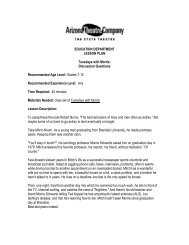Play Guide [356k PDF] - Arizona Theatre Company
Play Guide [356k PDF] - Arizona Theatre Company
Play Guide [356k PDF] - Arizona Theatre Company
- No tags were found...
You also want an ePaper? Increase the reach of your titles
YUMPU automatically turns print PDFs into web optimized ePapers that Google loves.
The Great GatsbyJAZZDuke Ellington, a jazz musician of theHarlem Renaissance. Photo taken in1953.The cultural quest for a fresh identity and a newplace in the world sent young Americans into moraland physical spaces previously unexplored. Coupledwith the advent of mass entertainment in the formof the radio broadcast, mainstream culture was ripefor the introduction of the previously forbidden.Young people sought new means of expression tocommunicate the extremity of the experiences withwhich the war had left them. Jazz, traditionally an artform of the African American community, satisfiedthe newfound desire to push against previouslyimmutable boundaries through its introduction intowhite mainstream culture.Contrary to the classical music and show tunes popularized during the previous decades,jazz was unlike anything that mainstream American culture had ever heard before.With its loud, syncopated, sultry tones, jazz provided the soundtrack to the moral andbehavioral exploration of a new era. Some critics blamed jazz’s unexpected melodiesand the freedom of its rhythm for the unconstrained behavior that accompanied it. Thewild, raucous abandonment of classical rules of musical theory was indicative of anunraveling of the rigid society left behind in the wake of the war.The origins of the word “jazz” are mysterious. While historians agree it began as aslang term and that originally it seems not to have referred to music, the exact wordfrom which it derives is uncertain. One theory supports the idea that the wordderives from “jasm” meaning energy and vigor that dates to the nineteenth century.Even when the word transitioned to its more modern usage, alternative spellingssuch as “jass” “jas” and “jasz” were common until 1918.Jazz, which originated in New Orleans, migrated to theNew York area in the 1920s as a facet of the HarlemRenaissance, which created some of the greatest jazzmusicians of all time. Duke Ellington, Joe “King” Oliver,and Louis Armstrong all made their fame and fortune inthe Jazz Age, becoming some of the most recognizednames in American music.“Jazz I regard as an American folk-music.”– Composer George GershwinJazz great Joe “King” Oliver, in a portrait<strong>Arizona</strong> <strong>Theatre</strong> <strong>Company</strong> <strong>Play</strong> <strong>Guide</strong>from around 1915.25


![Play Guide [356k PDF] - Arizona Theatre Company](https://img.yumpu.com/46218320/25/500x640/play-guide-356k-pdf-arizona-theatre-company.jpg)
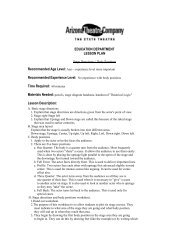



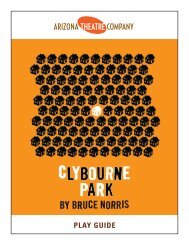
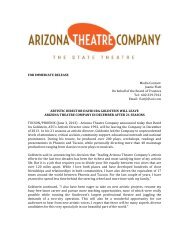
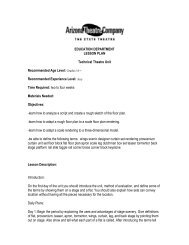
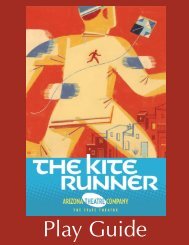
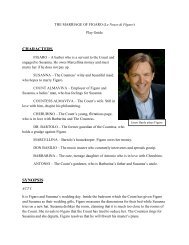
![[title of show] Arizona Theatre Company Play Guide 1](https://img.yumpu.com/24482689/1/190x245/title-of-show-arizona-theatre-company-play-guide-1.jpg?quality=85)
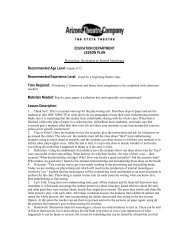
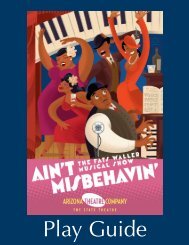
![Play Guide [1.2MB PDF] - Arizona Theatre Company](https://img.yumpu.com/11952176/1/190x245/play-guide-12mb-pdf-arizona-theatre-company.jpg?quality=85)
